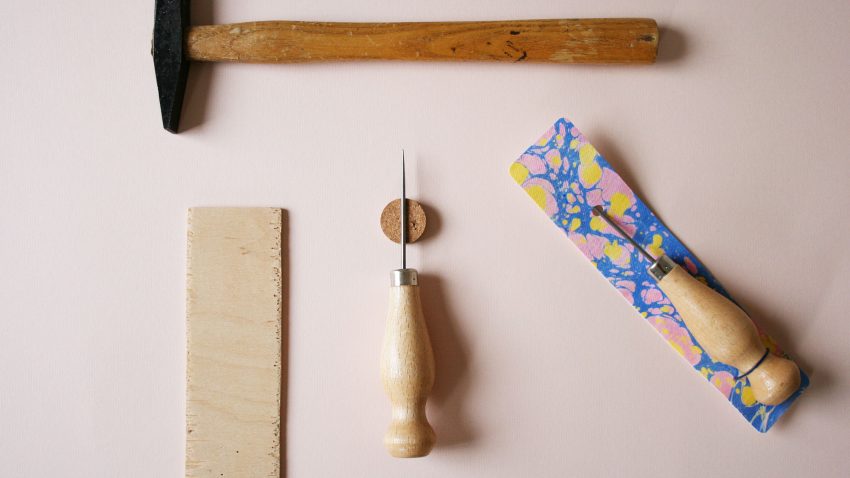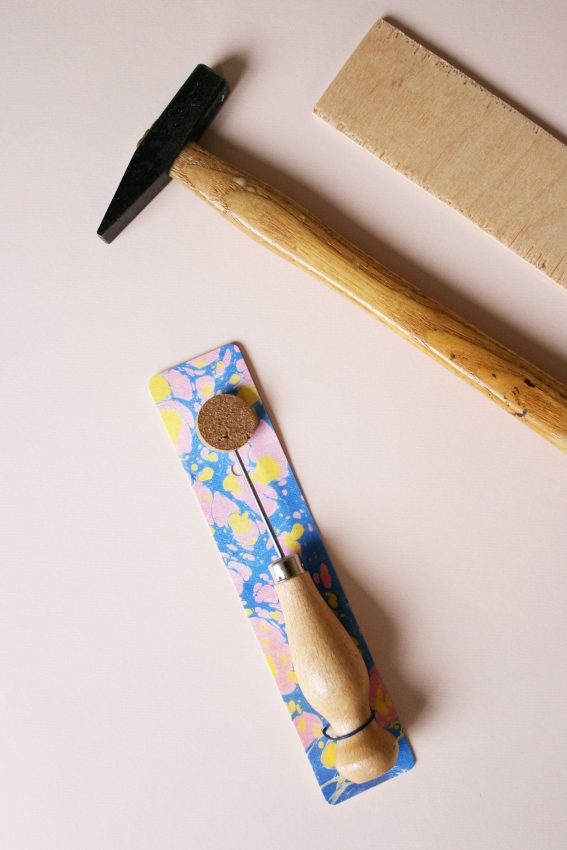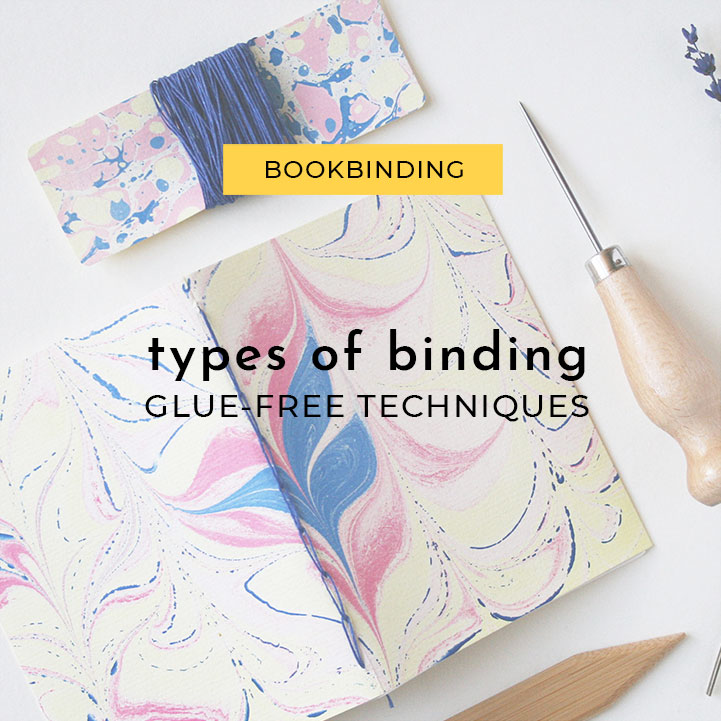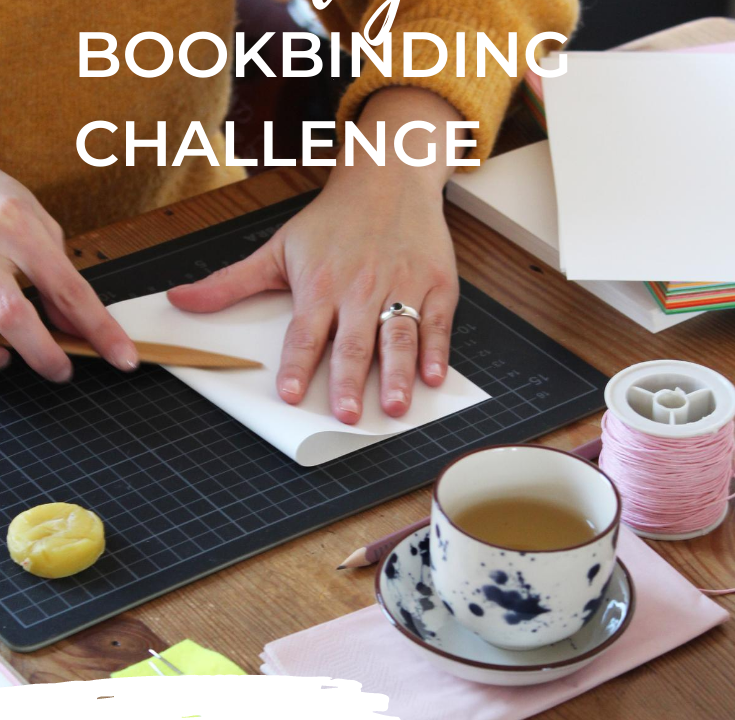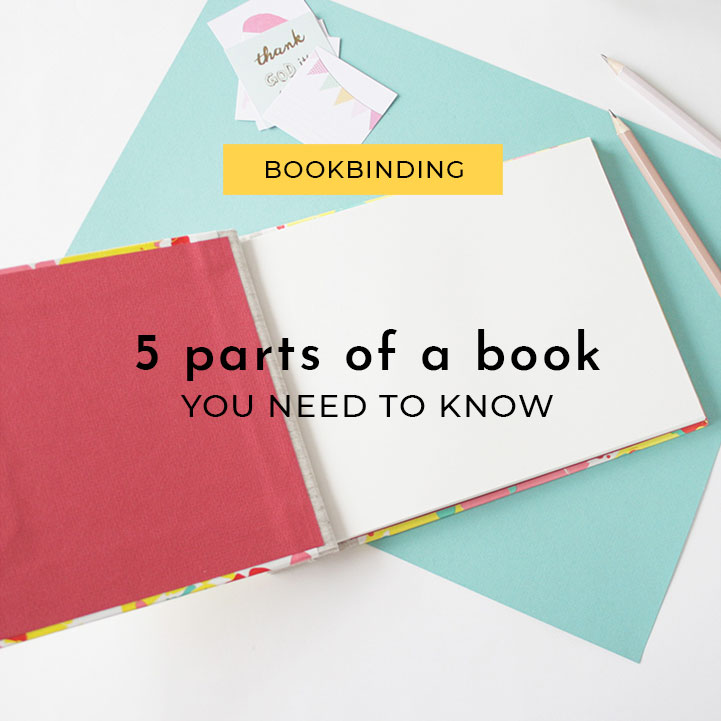
5 Parts Of A Book You Need To Know
27/10/2020A bookbinding awl isn’t a term you easily come across, unless you have attended a bookbinding course or read some book on the topic. Most of the participants in my bookbinding courses and workshops are beginners and have no idea of this bookbinding tool until they joined my class.
What’s a bookbinding awl?
As a tool consisting of two parts, a bookbinding awl includes a sharp needle and a handle, usually made of wood. This is a basic tool in any bindery and it helps us to punch holes through paper and cardboard. The bookbinding awl comes in different sizes; some are very small, others are bigger, some have a thin needle and others a thick one.
If you have the chance to test different bookbinding awls, do it! Take them in your hands and see if they sit comfortably in your palm. Go for the one that fits better in your hands, since you will be using it regularly – and without getting blisters in your palm!
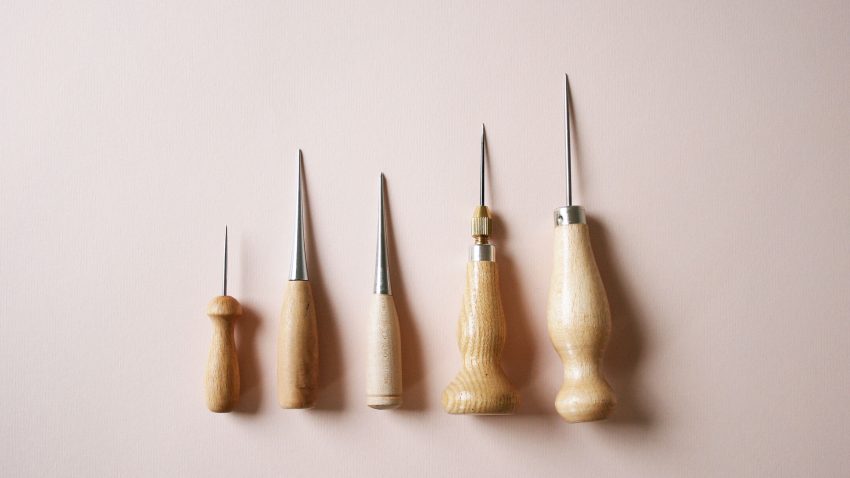
Here you can see my collection of bookbinding awls. I love and use each one of them, depending on the project I’m working on.
There are different ways of using a bookbinding awl for the same purpose, this is punching holes through paper and cardboard. I always tell my students that they have to find a way that works best for them. In the end, the goal is to punch perfect holes so we can start sewing our book right away. If you do it with the awl alone, at a 45° angle or with a hammer… that’s up to you. Here I will show you three different ways of using a bookbinding awl, try all of them next time you are making your own books and journals and find out which way suits you best.
This is one of my favourite bookbinding awls right now and it’s available in the Indigo Shop. What I like the most about it is the shape of the handle, because it allows me to hold the awl perfectly in my palm and apply as much pressure as needed to punch through the paper. Furthermore, the needle has a nice medium-thickness, perfect for small stitch binding projects or for Japanese binding.
How-To: Punch holes through paper using a bookbinding awl
- Using a bookbinding awl at a 45° angle
For me, this is the most practical way of punching holes through many signatures, for instance when you are binding a Coptic book or you plan to sew your book with the saddle stitch or chain stitch technique.
I place the stack of paper or signatures in a 45° angle and punch the holes introducing the bookbinding awl from the inside of the signatures to the outside. You might want to use foldback clips and some extra weight to keep the papers in place. I also recommend using something like a thin piece of wood or cardboard between the signatures and the cutting mat or work table to protect your working area from getting damaged by the awl. For me, it works even better when I place the signatures on the edge of the work table and punch the holes from the table towards my body. But be careful because you don’t want your belly to catch the needle 😛
- Using a bookbinding awl with a flat-opened book
This technique works for me when I have to punch small holes, so when I know that the thread and the needle I will use to sew the book aren’t too thick. In this case, you should lay your book or signature flat-opened on a cutting mat and punch the holes along the spine of the book. Since the book is laying down, unless you lift it up a little bit, the needle from the bookbinding awl won’t go all the way through. If you need the holes to be bigger, lift up the book a little bit and make sure the entire needle makes its way through the hole.
For a long time, I experienced real pain trying to punch holes for Japanese binding projects. Until I learnt how the Japanese bookbinding masters punch holes. They use a mallet! I found this small hammer at a flea-market and now I use it in combination with my bookbinding awl to punch holes. It makes such a difference: try it!
- Using a bookbinding awl and a hammer
This is the way many Japanese books are made. Imagine driving a nail into the wall but in this case, the wall would be a stack of papers and the nail the bookbinding awl. When using a bookbinding awl and a hammer to punch holes through paper and cardboard, make sure to fix the papers with foldback clips and apply extra weight onto the pile, so the papers stay in place.
Remember to protect your working area by placing a piece of wood or a pile of cardboard between the papers and the cutting mat or work table!
- Extra tip: Punching holes with other tools easy to find at home
There are other ways of punching holes through paper, e.g. if you are in a hurry and don’t have the right tools: you could use a push-pin, a nail and a hammer or even the needle you are using to sew your book. However, you will soon realize that investing in a professional bookbinding awl will save you time and effort at the end.
I recorded a video to show you step-by-step how to punch holes through paper with all the tools mentioned above. Ready? Hit the play button!
I hope you now got some extra inspiration for your home bindery projects. It all depends on the book project, the technique, the materials and your own technique… and it’s ok to try out other ways even if they are not the standard ones. You have to feel comfortable when making your own books, otherwise, you will end up not liking the making process, which is just the best part of any craft project, isn’t it?
And now, what’s next?
I have a pretty cool surprise for you: I have prepared an e-book with my Top 10 Bookbinding Tips & Tricks and you can get a copy now! Just click here to download your free copy of my e-book and get ready to start making your own books and journals like a pro.
If you have any further questions or want to learn more about bookbinding, feel free to send me an e-mail or check my online classes here.
Happy crafting,
Karen


